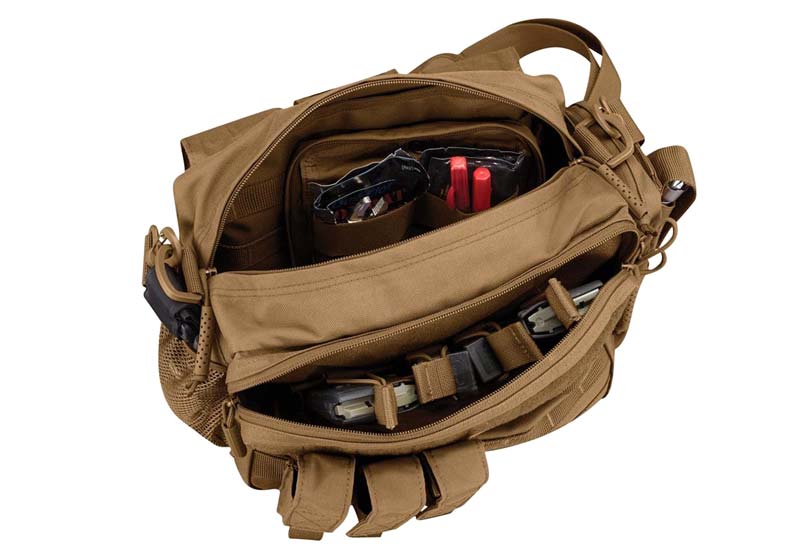
We’ve talked about bail out bags in other articles.
But, we’ve glossed over what may be the most important aspect.
I correct that today with an in-depth discussion of what contents police officers should keep in the bail out bag.
Based on my experience, research and interviews with other officers, I give you the comprehensive list of the things you should – and should not – include in your bag.
As a bonus, I include a downloadable checklist that you can use to stock your own kit. (Scroll down for the link.)
Let’s jump in.
- Winning the Fight
- Bleeding Control & First Aid
- Sustainment of Mission
- What They Carry
- Final Thoughts
Winning the Fight
Many officers set up bail out bags for response to violent, in-progress crimes. In fact, this is probably the most popular reason to have one.
Additional ammunition for your long gun and handgun is essential.
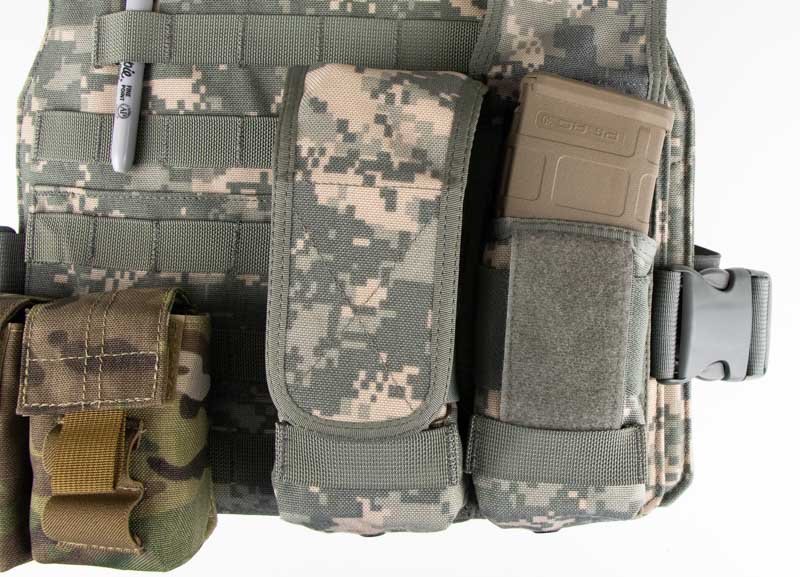
Whether you are setting up your bag as an active shooter response kit or as a general police bailout bag, having a few additional rifle and duty pistol magazines makes sense.
If a call goes sideways on you, you’re not going to be able to go back and retrieve additional ammunition from the patrol car. So, when the circumstances dictate that a bail out bag might be needed, having 4-6 rifle magazines and 2 or more pistol mags is prudent.
In my own rifle testing, I find that the 30-round Magpul PMAG and Lancer L5 Advanced Warfighter magazines are exceptionally reliable and durable.
For officers carrying shotguns, having both slugs and buckshot available is a good idea.
Shotgun shells can be carried in a dump pouch or in a bandoleer-type device. If you are authorized to carry both buckshot and slugs, I recommend keeping them separated so you know what you are loading under stress.
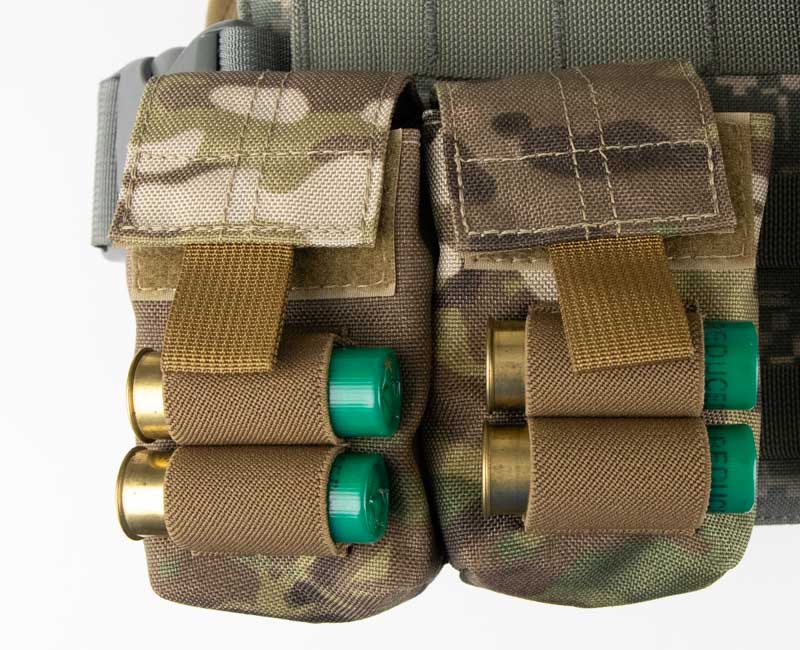
CAUTION: Never carry live ammo if your shotgun is set up as a less-lethal tool. Likewise, don’t carry bean bag (or similar) rounds if you are carrying a standard lethal force shotgun.
Mixing up lethal and less-lethal rounds is a recipe for disaster. Avoid the problem entirely.
Self-Aid and Buddy-Aid
I always recommend you carry a quality tourniquet on your person when in uniform.
You should also carry at least one more tourniquet in your bail out bag. I recommend carrying two additional, though some experts suggest even more than that.
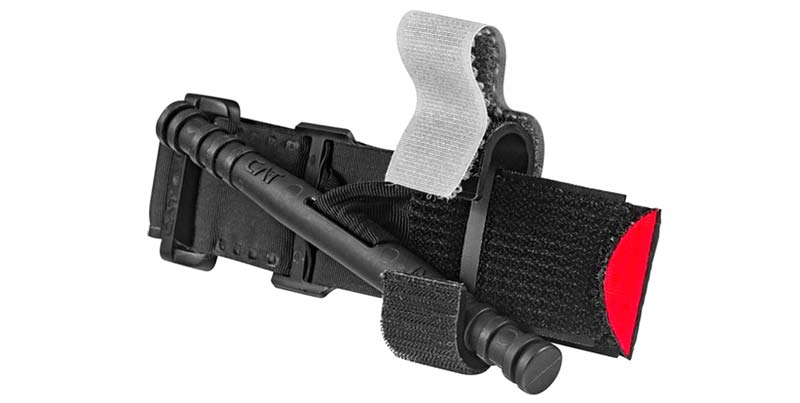
Please note: Many of the tourniquets sold recently on Amazon are counterfeit versions of reputable designs. I recommend only purchasing from Rescue Essentials for these. I personally recommend the CAT (Combat Application Tourniquet) found here. (Not an affiliate link, by the way.)
I also suggest carrying a blood clotting agent for wounds that tourniquets can’t properly address.
There are a variety of hemostatic agents you can choose from. I carry the QuikClot Combat Gauze. It has shown to be very effective at stopping serious bleeding. This specific version is z-folded so it doesn’t roll away from you when packing a wound.
Likewise, be careful where you purchase this product. At this time, I recommend the Rescue Essentials site again.
Another item I strongly suggest you carry is an Israeli-type pressure bandage. For significant wounds that may not require a tourniquet, these bandages are fast to apply and do an excellent job of controlling bleeding and covering wounds.
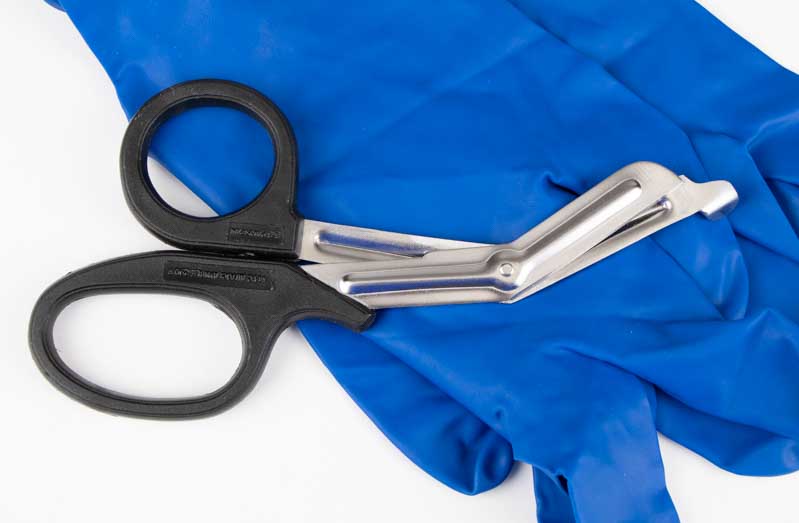
Quality rubber gloves are also a must. These can be rolled up into a compact package.
The idea with the additional gear is simple: you may have multiple victims to treat.
Officers in Boston, Aurora and Fort Hood all had multiple people – including other officers – wounded and needing assistance. Don’t let them down.
Sustainment of Mission
For lack of a better description, I refer to these items as things that help you sustain your ability to handle long, drawn out calls.
These are things that will help you keep focused and healthy when you are on a call for hours without relief.
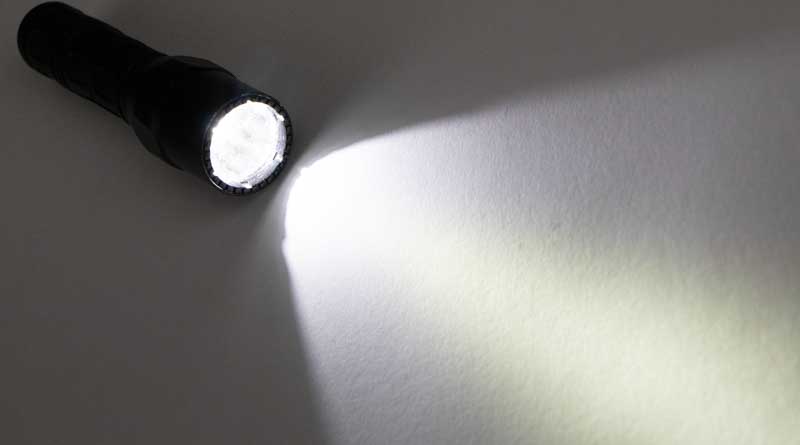
Here are the things I recommend:
- a small, high powered flashlight like the Surefire G2X Tactical or Streamlight ProTac HL – It should run on CR123A lithium batteries as these will store for a long period of time without losing a significant charge.
- spare set of CR123A lithium batteries for your flashlight(s)
- spare battery for your portable radio
- bottle of water – Dehydration on a call is bad juju.
- dry food such as a granola bar – Avoid anything that may melt in a hot car
- boonie or ball cap – This can keep the sun of summer off of you and provide some amount of heat retention in cooler weather. It can also keep the rain out of your face.
- black marker or grease pencil
- a length of paracord – Paracord can be used to hold a locked door open for responding backup officers. Likewise, you can use it to pull open a gate or door while minimizing your exposure to any gunfire.
- additional restraints – Handcuffs are generally best, but are much heavier than zip-cuffs. Some styles of cuffs and bags allow you to easily store 2 or more sets of zip-cuffs without taking up much space.
- gloves – Gloves can serve many purposes. I’m talking about thick gloves that can come in handy if you have to break glass or move large objects. Getting your hand cut open on rusty debris is a bad day. I like the Mechanix M-Pact but there are other brands and styles that work also.
Depending on your environment and climate, there are additional things you might want:
- satellite rescue beacon – If you patrol in a remote area of the country and have to enter the woods, a simple satellite rescue beacon can notify others of your position if you become lost, fall or are ambushed.
- watch cap – For the colder months, a knit watch cap can do wonders at retaining heat.
- chemical handwarmers – These tend to be small and light. One or two can help your hands stay warm and limber if you are in the cold for a long period of time.
- bug spray
- sunblock
- lip balm
What They Carry
I reached out to a number of law enforcement officers and asked what a police officer should carry in his or her bail out bag.
Each person had a different take on the contents of the bag based on their experiences and jurisdictions.
Rob Pincus
Rob is a part-time deputy with a rural department and an international firearms trainer. With his department, he does not have the same resources that an officer with an urban agency might have.
Rob’s recommendations on bail out bag contents:
- extra emergency medical gear (assuming officer is already carrying gear for self-treatment)
- extra handheld flashlight
- extra loaded magazines
- pen/notebook
- extra cuffs
- extra cuff key
- zip ties
- Wedge-It
- some 550 cord
- multi-tool
- protein bar
- gloves
- warm hat
You can follow Rob’s work at the Personal Defense Network.
Greg Ellifritz
Greg is a full-time police officer, firearms trainer and publisher of Active Response Training. His “Bag of Doom” is set up like an active shooter bag for police that I’ve also discussed. (See my Active Shooter Bag vs. Bail Out Bag for additional information.)
Greg’s bag contains:
- rifle magazines in two flavors: 30-round mags with Hornady GMX ammunition and 20-round mags with Hornady TAP rounds. The two different ammunition selections allows him to pick the correct round for the environment while the different size magazines allow him to instantly know which is which.
- handgun magazines for his pistol (9mm) and additional magazines in .40 S&W and .45 ACP for the pistols of the other officers on his shift
- 12 gauge shotgun ammunition – both 00 buck and slugs
- .38 Special ammunition for his backup gun
- a medical pouch that contains: rubber gloves, three CAT-type tourniquets, two packages of Quikclot Combat Gauze, one H&H H bandage, two packages of compressed gauze and four HyFin chest seals.
Greg also suggests that if you label your bag, it may make things quicker if your partner has to dig into your gear to locate something.
Make sure you follow Greg’s blog at Active Response Training. He has some excellent insights and testing.
Randall
Randall is a full-time police administrator at an urban Florida police department. Don’t hold that against him as most of his time has been in patrol, K-9, SWAT and robbery-homicide. He’s a real cop who’s been in tough situations.
He recommends using a load bearing vest for a bail out kit with rifle-rated plates. Previously, Randall recommended the 5.11 VTAC LBE vest when rifle plates were less common and more expensive.
That plate carrying vest would be equipped with:
- AR-15 magazines,
- SIG P320 magazines (his current issue duty pistol),
- a trauma kit with tourniquets,
- Sharpie markers and chalk
- door wedges
- paracord
- EMT shears and latex gloves
- spare glasses
Note: Spare glasses are an underrated piece of survival gear for law enforcement. I recommend every officer that has corrected vision keep a second pair on their person or at least in their bail out bag.
With inexpensive eyeglass options like Zenni Optical and Eye Buy Direct available, there is little excuse not to have a spare set.
Randall publishes the ThinBlueFlorida site and offers an experienced view on law enforcement issues.
Final Thoughts
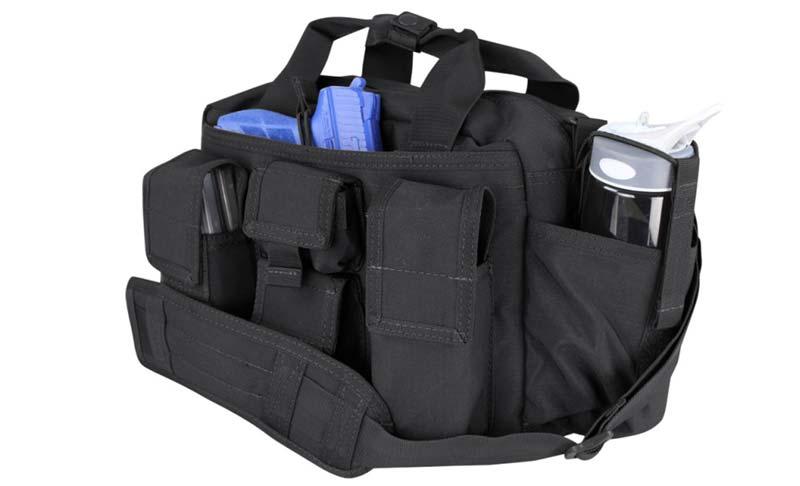
A bail out bag is a highly individual thing.
Based on your environment, access to additional resources, jurisdiction size and call types, your bag may contain gear similar to mine.
Or, it may be very different.
The key is that the bag is set up to work for you.
All of that said, here is our downloadable checklist for you: Bail Out Bag Contents Checklist
Add what makes sense and leave out the things that aren’t necessary.
If you don’t yet know what kind of bail out bag you want, make sure you read our recommendations in the Best Police Bail Out Bag article.
G says
Thanks for the inputs! A nice addition would be a gas mask. Like in Aurora, it’s way to easy for the bad guy to deny access to responders by simply using OC or CS. Stay safe.